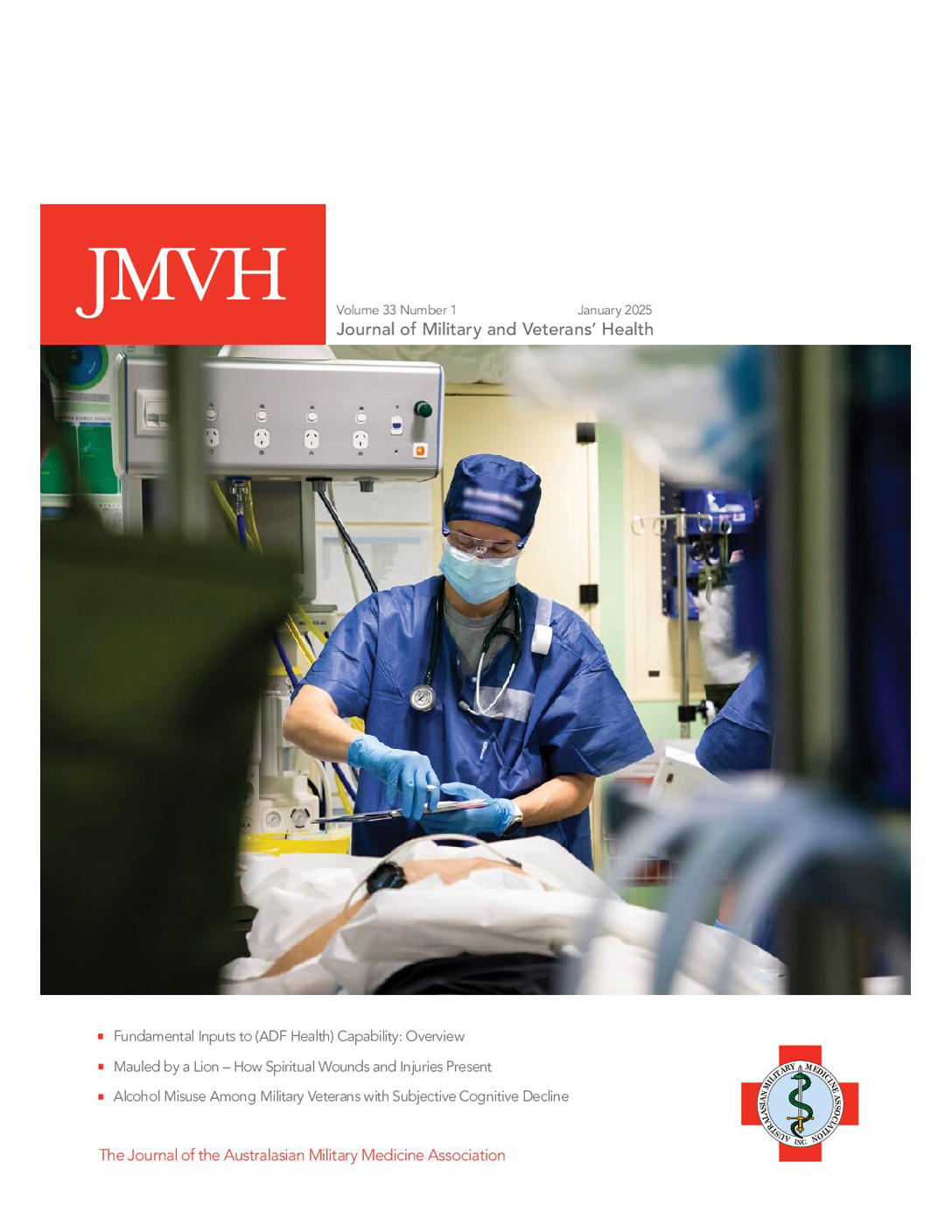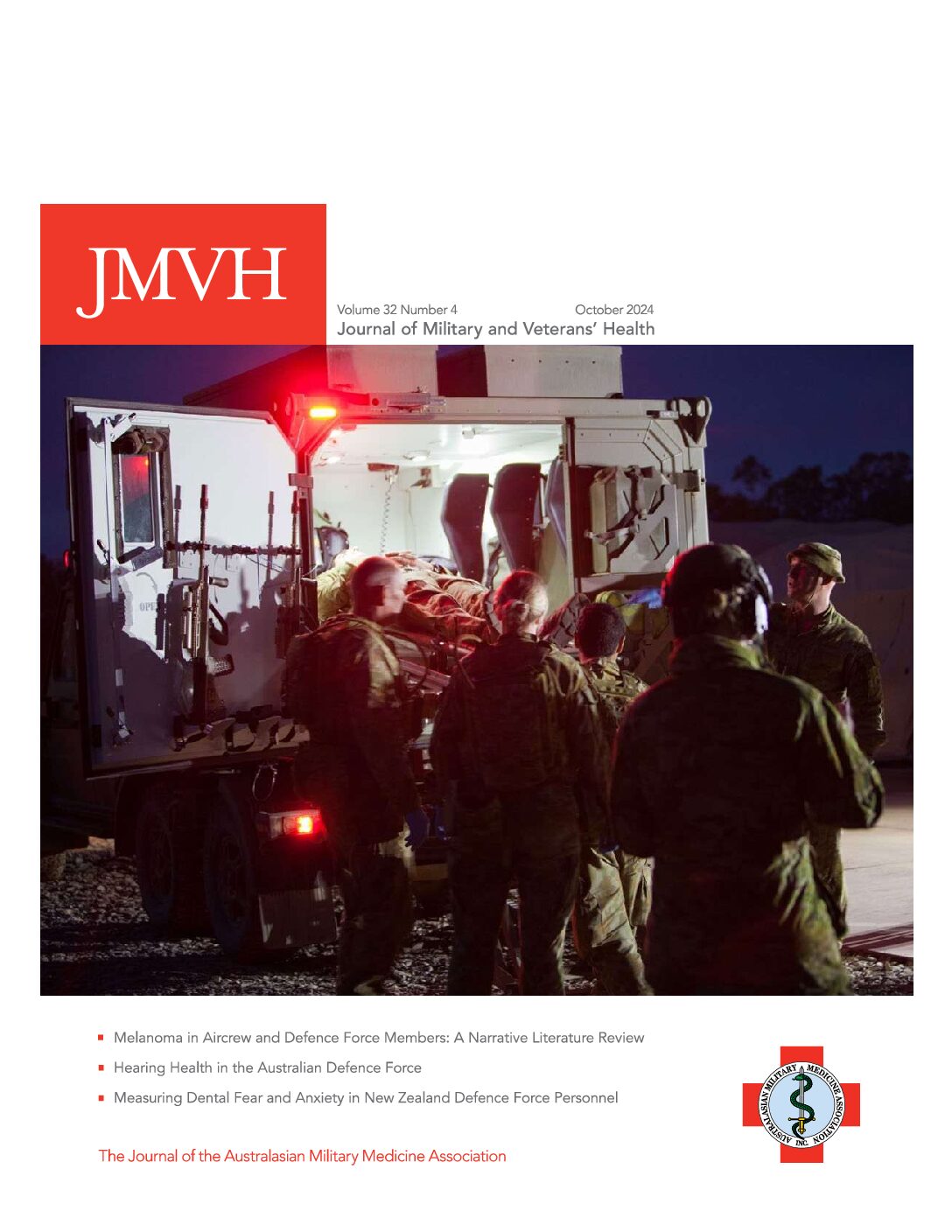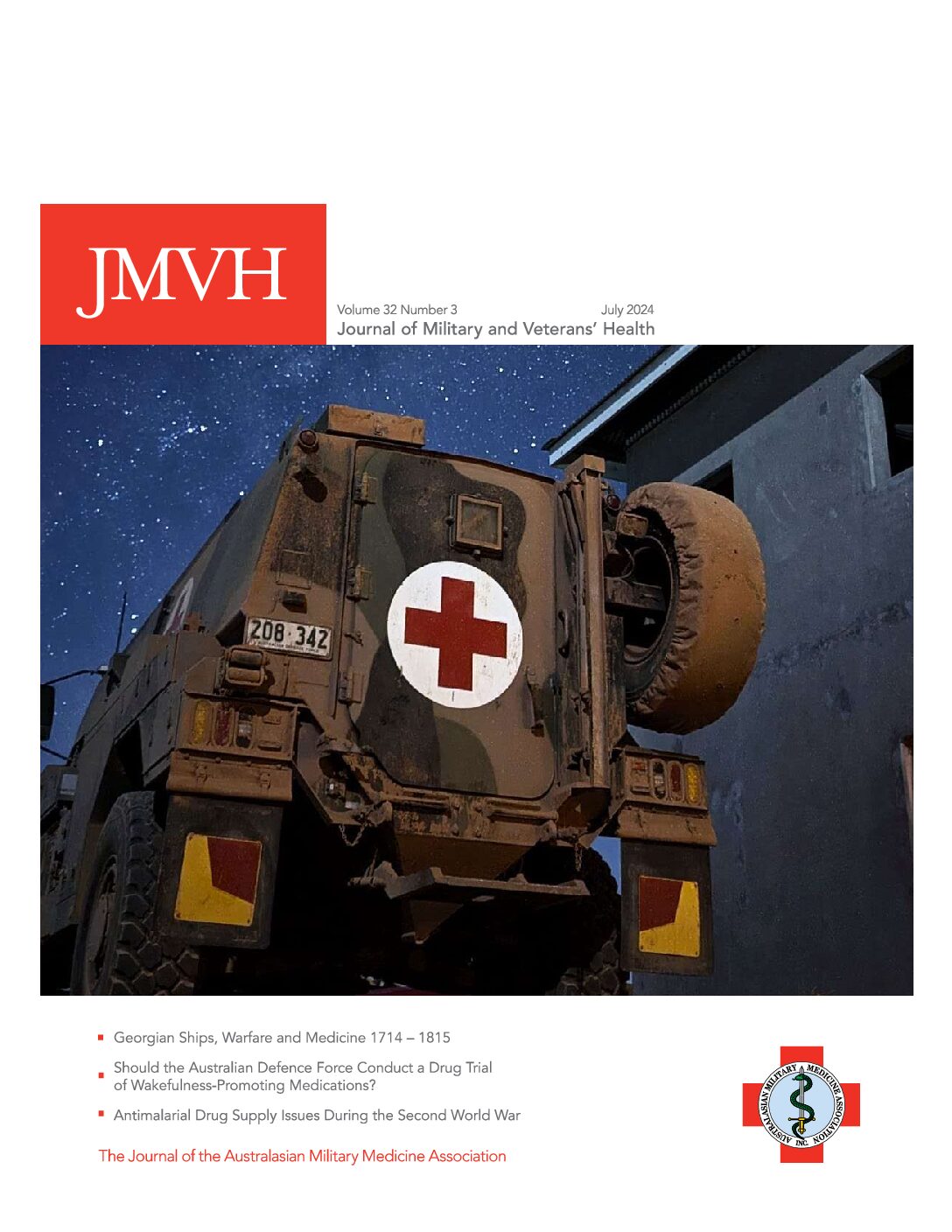Psychological Coping Mechanisms in Military Physicians: A Qualitative Exploration of Stress Management Strategies
Background: This qualitative study investigates the coping strategies utilised by military physicians facing the dual demands of military service and healthcare provision. Recognising the unique stressors within this professional context, the study aims to identify both adaptive and maladaptive coping mechanisms employed by military physicians. Methods: A purposive sample of 18 military physicians from diverse… Read more »
Efficacy of yoga for managing sleep problems among military veterans: A systematic review and meta-analysis
Purpose Yoga is considered a potential alternative treatment for sleep disorders in military veterans. This study aims to conduct a systematic review and meta-analysis to critically assess the best available evidence on yoga’s effects in managing sleep problems among military veterans. Material and methods A systematic search was conducted across four electronic databases (Scopus, Web… Read more »
Effects of Lighting Conditions on Psychophysiological Re-sponses and Motor Skills in Warfighters During Close Quarter Combat Simulations
Abstract: This study examines the impact of lighting conditions (darkness, rotational light and continuous light) on warfighters’ psychophysiological responses and fine motor skills in close-quarter combat (CQC) simulations. The study assessed the rate of perceived exertion, blood lactate concentration, cortical arousal, isometric lumbar and leg strength, and the time required to reload a pistol magazine… Read more »
Musculoskeletal Injury and Physical Fitness Across US Army Occupational Specialties
Abstract Background: Military occupations are widely diverse, requiring specific skill sets and physical demand levels to accomplish their objectives. Purpose: To describe musculoskeletal injury and physical fitness across US Army military occupational specialties (MOS). Methods: Demographics, health behaviours and physical training data were obtained by electronic survey. Musculoskeletal injuries and Army Combat Fitness Test (ACFT)… Read more »
Importance of the Spleen to Survival from P falciparum
Abstract: P falciparum infections carry a considerable mortality risk, but the nature of the ‘immunity’ gained from infection experience is uncertain. Although anaemia may contribute some protection against mortality, the function of the spleen appears critical to controlling P falciparum parasitemia and increasing survival. Melanesian reports suggest that survival advantages of P vivax infections and… Read more »
Considerations Regarding Appendicitis at Sea
Introduction When are military providers comfortable providing an ‘austere’ level of care versus pursuing a higher echelon of care for patients with acute appendicitis? This is a non-issue in active combat scenarios or when medical transport is unavailable. But often, as deployed providers, the decision to treat the patient in a forward, austere location with… Read more »
Needed Evolution in Afloat Teleradiology and Imaging Capabilities
Introduction The concept of telemedicine dates back nearly 120 years, when William Einthoven won the Nobel Prize for transmitting the first EKG via telephone over 1.5 km.1 Teleradiology has since evolved to allow specialists to review medical imaging remotely, facilitating faster and higher-quality patient care.2 While ordering physicians can provide preliminary reads, the American College… Read more »
Stuart Naval Warfare, Ships and Medicine 1603–1714
Introduction Previous articles in this series described the development of a cycle from prehistory to the end of the Tudor period, whereby increasing maritime trade necessitated larger and more efficient ships to transport merchandise and better weapons to defend or attack them, facilitating further trading opportunities.1,2,3,4,5,6,7 However, it was not until the 18th century that… Read more »
Murray Valley Encephalitis as ‘X’ Disease in Australia
The conclusion is therefore justified that the cases of ‘mysterious disease’ occurring in Queensland and New South Wales are caused by the same virus as acute poliomyelitis. Anton Breinl, 19181 Clinical diagnostic technology has steadily improved since the revolutionary advancements in medicine and biology of the 19th Century, led by Louis Pasteur. By the time… Read more »
Editorial – Transformation of War
Transformation of War In 1991, Martin van Creveld, in ‘The Transformation of War’, speculated on what the character of war would be in a post-Cold War era.1 His assessment focused on who would be fighting, the reasons for and the aim of the conflict, and how and why war would be fought in the future.1 van… Read more »
Fundamental Inputs to (ADF Health) Capability: Overview
Introduction This paper—and the series to date and to follow—is based on conclusions reached in a previous series by the author regarding occupational and environmental medicine in the ADF.61,2,3,4,5,6,7,8,9,10,11 The previous series describes why high workplace illness and injury rates confirm the need to improve the management of hazards associated with ADF workplaces, with better… Read more »
Mauled by a Lion – How Spiritual Wounds and Injuries Present
Abstract The mauling that some veterans suffer as a result of issues such as shame, anger, self-abuse and depression are very real, lasting and painful aspects of their lives. For a Religious/Spiritual Practitioner (RSP), or indeed any treating practitioner, to make a meaningful contribution towards treating a Spiritual Wound and Injury (SW&I) they must determine… Read more »
Book review of Hitler’s Tyranny: A History in Ten Chapters: The Last Adventurer-Conqueror
The last adventurer-conqueror: A review of Hitler’s Tyranny: A history in ten chapters By Ralf Georg Reuth, Translated by Peter Lewis Reviewed by Robert M Kaplan The 20th century was the most murderous period in history. Between them, Mao Zedong, Josef Stalin and Adolf Hitler killed millions of people. While the first two are relatively… Read more »
Alcohol Misuse Among Military Veterans with Subjective Cognitive Decline
Abstract Although binge drinking has been identified as a significant risk factor for the development of cognitive decline, much less attention has been paid to binge drinking among patients already experiencing cognitive decline. Given that military veterans in the general population are more likely to engage in unhealthy alcohol consumption, we hypothesised that veteran–nonveteran disparities… Read more »
Acute Schistosomiasis: The ‘Fluke’ That Saved Taiwan
Abstract Acute schistosomiasis is rarely of military concern, but epidemics have disrupted tropical operations. Acute schistosomiasis is particularly challenging to diagnose because it presents as a non-specific febrile disease, often with an urticarial rash before parasites appear in the stool. US Army combat engineers were infected during bridge construction on Leyte in the invasion of… Read more »
Psychological Screening in the Australian Defence Force: An Historical and Contemporary Analysis of what Works
Abstract With a rapid and significant rise in psychological screening within the Australian Defence Force (ADF) over the past 20 years, ambiguity has developed between a psychological screen and a psychological assessment used for pre-employment and pre-deployment selection purposes. Additionally, confusion persists around what constitutes a mental health or psychology screen and when it should… Read more »
Unraveling the Interplay Between Self-efficacy and Decision-making in Military Contexts: A Systematic Review
Abstract The success of missions and personnel safety is contingent upon the ability to make effective decisions in the dynamic and high-pressure setting of military operations. This systematic review examines the relationship between self-efficacy and decision making in military settings. Six studies meeting inclusion criteria were identified through a rigorous search of electronic databases and… Read more »
Victorian Naval Warfare, Ships and Medicine 1815–1900
Introduction Previous articles described the development of a cycle from prehistory to the end of the Napoleonic wars, whereby increasing seaborne trade necessitated larger and more efficient ships, which led to more and better weapons to defend or attack them, thereby creating further trading opportunities.1,2,3,4,5,6,7 While the technical developments in ships, weapons and medicine often… Read more »
Guest Editorial – Major General Professor TJ Hodgetts
Major General Professor TJ Hodgetts CB CBE KHS DSc PhD MMEd MBA Chair, Committee of Chiefs of Military Medical Services NATO Headquarters, Boulevard Leopold III, Brussels, Belgium Common Military Medicine Challenges in an Increasingly Unstable World The 45th International Congress on Military Medicine (ICMM) was hosted in Brisbane, Australia, from 16 to 20 September 2024…. Read more »
Melanoma in Aircrew and Defence Members: A Narrative Literature Review
Abstract Melanoma is the most serious form of skin cancer. While classical risk factors are well described, the literature debates whether specific subgroups in the community have an increased risk of developing the condition. These include those who work as aircrew or in the defence forces. While occupational skin cancer is increasingly recognised, it is… Read more »
Skill fade in Military Medical Training: a literature Review of Supraglottic Airway use in the prehospital environment
W Maddocks Background: Skill fade is a potential issue in any military medical training environment. Within the current New Zealand Defence Force (NZDF) medic training programme, emergency skills are taught and practised in a simulated environment but are rarely used in real-life situations. As there is infrequent exposure to emergency situations during training, there is… Read more »






